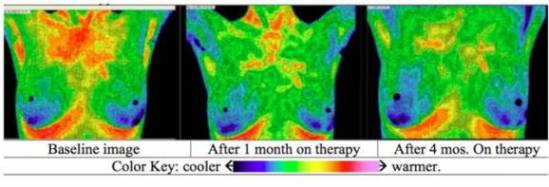This may actually be a blessing in disguise since women might now be motivated to look at other options. There is an option which is non-invasive and very accurate. Thermography! Breast Thermography looks at a woman's risk for developing cancer (i.e., best use of thermography is before the problem) while mammography is used for identifying a problem after it is present and has been there long enough to start becoming visible. If these technologies were to be compared to working with the weather, then a thermogram would tell you what the chance of rain is and if over time the weather is getting better or worse. The mammogram would be there to tell you how many inches it already rained. In other words, the thermogram is best used in the 'preventive' mode (before the cancer comes) while the mammogram is best used in a 'corrective' mode (it only begins to give information about a cancer once the cancer is there). Each has a different purpose. A colleague of mine put it this way, "using a mammogram for preventive care is like trying to drive forward by using the rear-view mirror". Similarly, using a thermogram to image a tumor is not an appropriate use of that technology. The assessment for tumor location and size would be obtained with a mammogram, ultrasound or MRI.
In a car analogy, the thermogram is there to let you know that a rough road is coming up, likelihood of potholes etc. and provide time to make a course change. The mammogram lets you know how big the pothole was that you already hit.

An additional benefit to thermography is that it is a sensitive indicator of change in the vascularity and general health appearance of the breast. It can show increased/decreased vascularity (see the grey scale images above), thermal symmetry or new hot spots that were not there before. It can show unhealthy changes in the breast years before a cancer may form in that breast. This allows for monitoring of those changes in response to health and lifestyle changes. If the right things are being done, then we see an image indicative of a healthier breast.
Using thermography to monitor progress in cancer therapy (as a feedback tool)
This patient (image below) had poor results with previous cancer therapies for three years. She wanted to know if a new therapy would help, but felt she didn't have much time to wait for the answer. We decided to try thermography as another form of feedback.
The red here corresponds to normal body heat (e.g., under the breasts, on the neck, and in the armpits). Over the chest where this (red) heat doesn't belong, it is produced by a cancerous tumor. Notice how the heat shrinks and breaks up as she receives a new and successful therapy for her cancer.

.png?width=305&height=132&name=NIHAlogoBLUE_3_transparent%20(2).png)
